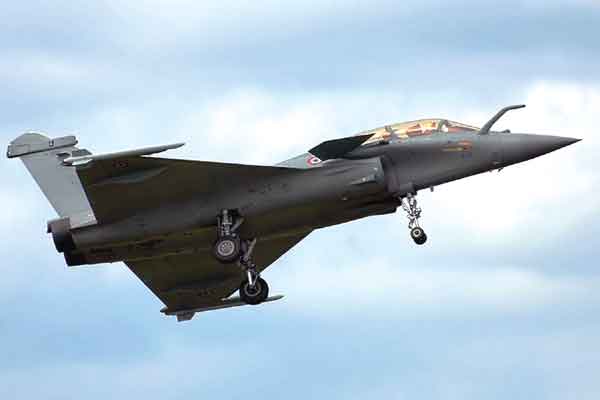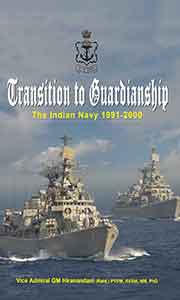Till very recently Indian Army has been looking at acquiring weapon systems and platforms to meet operational voids and emerging requirements to deal with known and perceived threats, without due diligence to sustenance of the system through its lifecycle. This has resulted in a flawed acquisition strategy and a fractured approach to acquisition resulting in abysmally low equipment serviceability and even worse impacting mission reliability, particularly after the expiry of warranty periods, which is crucial to planning operational reach and effectiveness.
Equipment acquisition and in-service equipment management are under distinct PSOs at IHQ of MoD (Army) – DCOAS (P&S) and MGO respectively. This has led to fragmented accountability.
The management of legacy systems such as Tank T-72, Smerch and OSA –AK weapon systems has brought forth the challenges in maintaining these systems procured ex-import and now being a liability of strike formations on account of poor mission reliability and sub-optimal serviceability. The non-availability of spares, rotables and MUAs such as power packs, transmission assemblies, control systems etc ex OEM have led to the present situation. The OEM in the meanwhile have shut down assembly lines and moved on to a higher technology threshold. This is primarily attributable to lack of foresight and due diligence towards lifecycle sustenance at acquisition stage.
While acquisition phase activities are critical to designing, developing and implementing a successful and affordable sustainment strategy, the ultimate measure of success lies in the application of the formulated strategy after the system has been deployed for operational exploitation. Therefore, a sustainment philosophy cannot be preordained and applicable to all equipment / class of equipment across the equipment profile. It needs to be proactive, evolving and in-sync with the operational and employment philosophies of equipment based on capability desired from the weapon system/ platform to be inducted. Further it may also further evolve once equipment is exploited post-induction, based on operational, technological and environmental factors.
Drawbacks in the Present System
There are multiple agencies responsible for closely interlinked activities of equipment management (EM). The system has proved to be sub-optimal for high-tech equipment and is not suitable for the emerging operational scenarios. The major short on the comings of the existing system are:-
As equipment management has a decisive impact on our combat preparedness there is an imperative need to make it distinct from other logistic activities.
- ‘Life cycle concept’ / ‘Womb to Tomb’ view is not being taken for EM, which is a major cause of poor sustainment of existing capability particularly with regard to complex and advanced weapon systems viz, Tank T-72 and T-90 S, AD weapon systems, Schilka, OSA –AK, Fire support systems such as Smerch etc.
- Equipment acquisition and in-service EM are under distinct PSOs at IHQ of MoD (Army) – DCOAS (P&S) and MGO respectively. This has led to fragmented accountability.
- ‘Sustainment Needs’ do not share the centre stage with the performance requirements, at the time of procurements. Acquisitions take priority at a time when the system has not been deployed for exploitation, the sustainment requirements surface much later as the equipment ages, post exploitation.
- The OEM response to sustainment needs at a later timeframe is inadequate, which is seriously eroding existing operational capability.
- The focus on EM is inadequate as this vital function is presently a subset of the overall logistic system. As EM has a decisive impact on our combat preparedness there is an imperative need to make it distinct from other logistic activities.
Policy Framework for Product Support
A stated policy on floats of rotables, which is presently lacking and does not form of the acquisition strategy, is much needed and will only enhance mission / equipment reliability. Quantity and quality of floats, particularly in respect of major assemblies/rotables needs to be factored in the initial contract at the time of acquisition of the weapon system and their requirement may be leveraged for cost discovery alongwith the procurement of the main weapon system.
Performance Based Logistics objectives include optimizing total system availability while minimizing cost and logistic footprint. It meets performance goals for a weapon system through a support structure based on long term.
Tools for Implementing Life Cycle Sustenance
Indian Army does not employ tools for working out lifecycle support system. The tenets of Total Life Cycle System Management (TLCSM) and Performance Based Logistics (PBL) are very versatile tools which emphasise upon an early focus on sustainment within the system lifecycle.
- TLCSM is the implementation, management and oversight by the designated Program Manager (PM) of all activities associated with the acquisition development, production, fielding, sustainment and disposal of a weapon system across its lifecycle[1]. It empowers the PM as the lifecycle manager with full accountability and responsibility for system acquisition and follow on sustainment.
- PBL is the preferred sustainment strategy for weapon system product support that employs the purchase of support as an integrated affordable performance package designed to optimize system readiness[2]. PBL objectives include optimizing total system availability while minimizing cost and logistic footprint. It meets performance goals for a weapon system through a support structure based on long term performance agreements with clear lines of authority and responsibility.
- TLCSM and PBL concepts must be initiated to provide more effective, affordable and operationally ready systems through increased reliability, supportability and maintainability.
Key Logistics Criteria[3] which may contribute to analysing and conceptualising a PBL approach need to be incorporated in the acquisition strategy in the initial stages of acquisition itself :-
Leveraging sustainment through acquisition by adopting a Total Life Cycle Costing (TLCC) approach coupled with PBL and exploiting the provisions of DPP towards sustenance will not only ensure ‘bang for the buck’ but also conserve capability.
- Physical and operational maintenance environment of the proposed system.
- Functional characteristics of the proposed system, its complexity and the obstacles and enablers to effective sustainment in that environment.
- Impact of the proposed system on the maintenance capabilities.
- Manpower and technical personnel requirements and constraints both in terms of quantity and skill levels and the use of vendor/OEM support.
- Logistics footprint, deployment requirements and other factors affecting the operational concepts.
- Performance histories of prior system or system of similar capabilities, where feasible.
- Concepts and technology with regard to their ability to facilitate the use of embedded diagnostics, prognostics and similar maintenance enablers.
- Developing lifecycle cost estimates.
Sustenance Imperatives : Acquisition Process
While adequate provisions exist in the prevalent procurement system to address issues relating to sustenance and adequate linkages exist between acquisition and sustenance in the DPP 2013, sustainment philosophies are not fully meshed and integrated with the acquisition process. Existing provisions of DPP which address the issue are as listed as under, these aspects are however not given the due diligence while formalising and processing proposals through the acquisition process :-
Upgrades/modifications to be carried out on the equipment during its life cycle are also intimated by the vendor/OEM.
- RFI – RFI is perhaps the starting point of the acquisition process wherein details of technology/technical parameters of equipment available with vendors/ OEMs is ascertained towards meeting the operational requirement of a weapon system. The response to RFIs are utilised to formulate broad based SQRs. Today almost no proposal is being processed without an RFI being floated and their responses being analysed. It is mandatory as per DPP 2013. The RFI inputs includes comprehensive maintenance/product support package, requirement of ToT/MToT, engineering support package (ESP) and Manufacturers Recommended List of Spares (MRLS).
- GSQRs – The Part IV of GSQR format specifically relates to operation and maintenance issues. The maintenance requirements including maintainability, reliability, ESP in terms of spares, technical literature, standardization and training are elucidated in the GSQRs. These inputs are invariably in consultation with the nominated maintenance agency.
- AoN – The ‘Brief of Proposal’ as per format laid down in DPP 2013 also gives the necessary importance to sustenance issues in terms of:- a)Transfer of Technology (ToT) Issues : Capability of absorption of ToT/manufacture of systems/ sub-systems/ assemblies.b)Maintenance Aspects : Engineering /maintenance support for the full life cycle of the equipment in terms of ESP, MRLS and Maintenance ToT.
- RFP – Part I of the RFP includes conditions of usage and maintenance, training and ESP. Para 10 of RFP explicitly mandates the vendor/OEM to give inputs as regards reliability model, reliability prediction and its validation by designer/manufacturer to ensure reliability of stores throughout shelf life. Product support in terms of maintenance, materials and spares for a specified period (in years). Upgrades/modifications to be carried out on the equipment during its life cycle are also intimated by the vendor/OEM.
It is thus evident from the above assessment that there is a strong felt need for a comprehensive analysis and review of the present system for equipment sustainment to make it responsive to operational imperatives and to establish clear linkages between acquisition and sustenance. Leveraging sustainment through acquisition by adopting a Total Life Cycle Costing (TLCC) approach coupled with PBL and exploiting the provisions of DPP towards sustenance will not only ensure ‘bang for the buck’ but also conserve capability.
Reference:
- As specified by Acquisition Community Connection in their article, “DoD Template for Application of TLCSM and PBL In the Weapon System Life Cycle” at https://acc.dau.mil
- ibid
- www.acq.osd.mil/log/sci/exec_info/tlcsm_guide_temp.pdf







Dear Bikramdeep
While your efforts are well appreciated in writing the article, 4 aspects (phases) of LCC needs to be covered in detail. Do you a full paper on this?
PBL is OK for ‘operations’ phase, what is more challenging in cost bench marking for disposal phase. We donot have a good disposal policy which could have been implemented and hence disposal cost determined. Look at the disposal cost of Vikrant.
Challenge also exist in R&D phase. Lessons from BrahMos would give us some empirical data/ direction if not bench marks on same.
Great Grand Wishes
Young retired Vardiwala
The concept of LCC at NPV has been taught at the College of Defence Management for decades. Probably what is lacking is acceptance at the right level.
It is the easier wrong of phasing out a system for non availability of spares that is adopted, rather than the harder right of making arrangement for indigenous production/reverse engineering or whatever (right from the day we can lay hands on the eqpt), to sustain the capability. PBL is the right thing to do.
The emphasis is generally on “Acquisition” as that is where the “Moolah” is.
My comment is based on my experiences. I was on the faculties of Leadership Training, Higher Military Learning and Defence Management institutions.